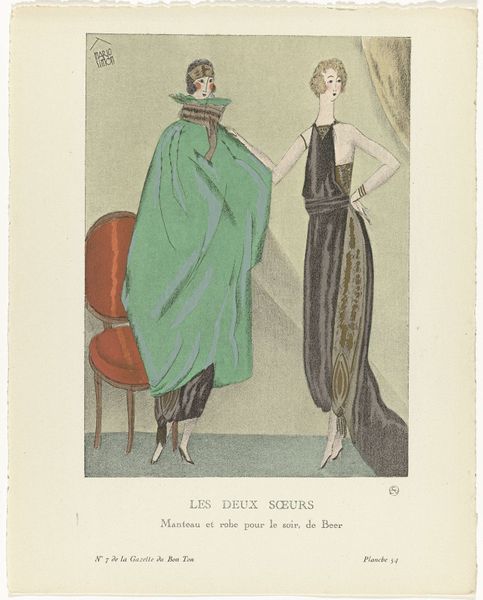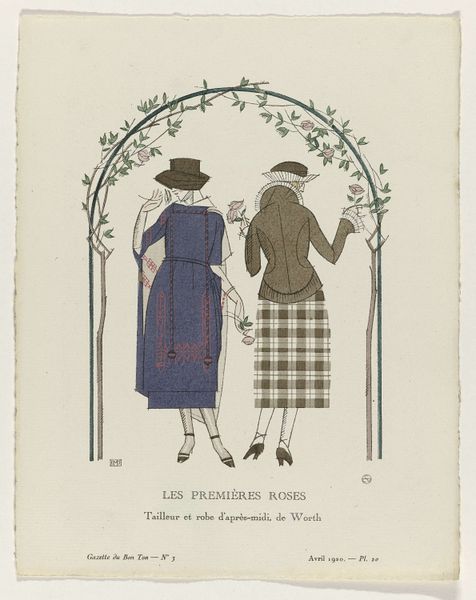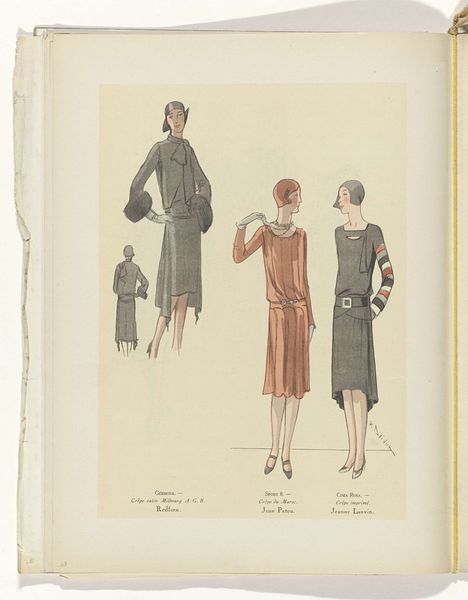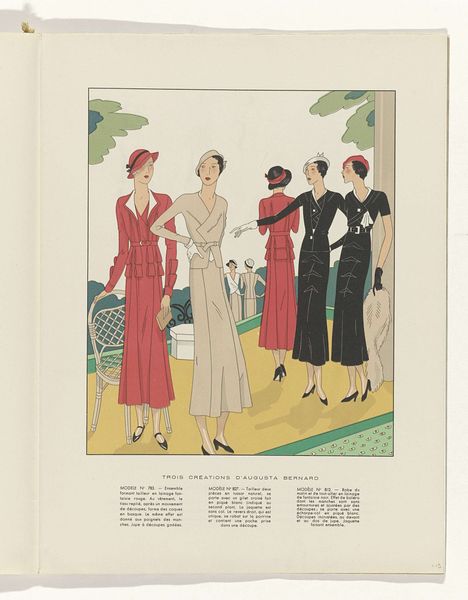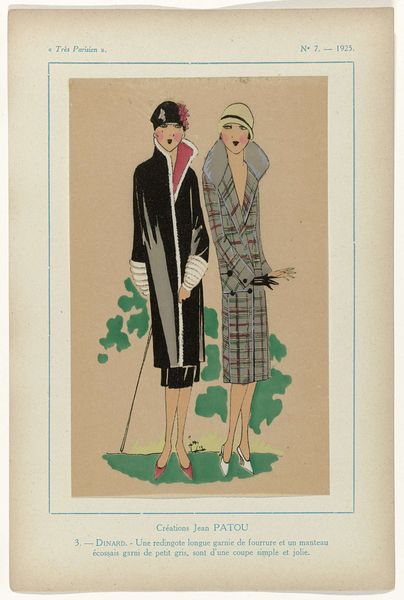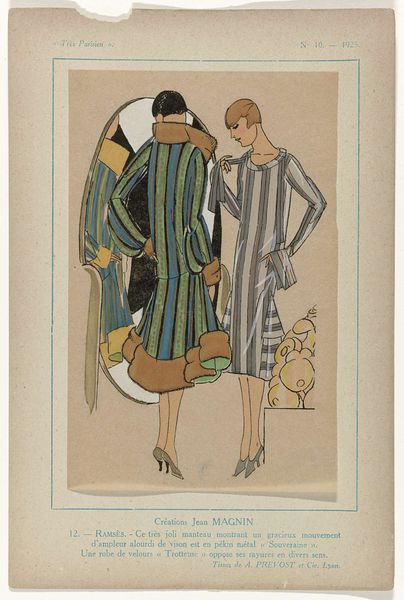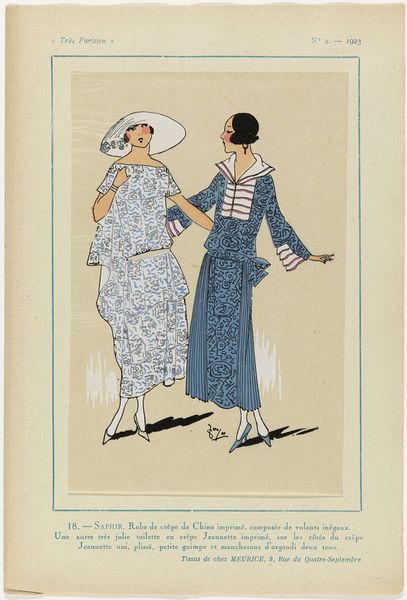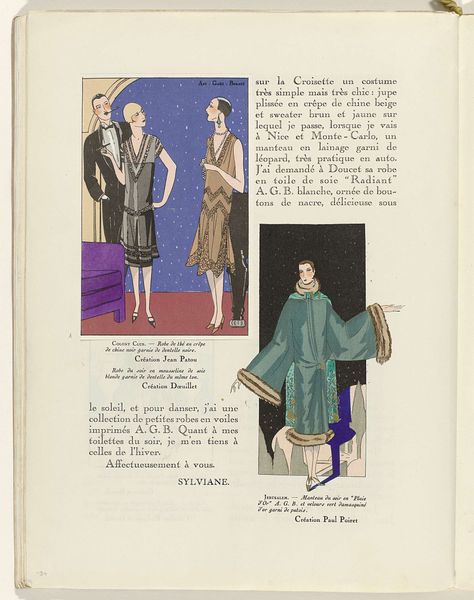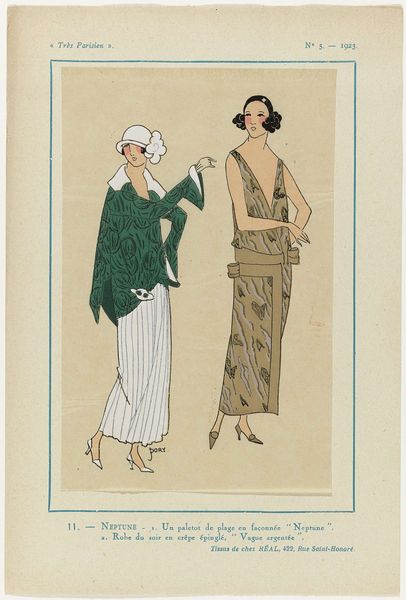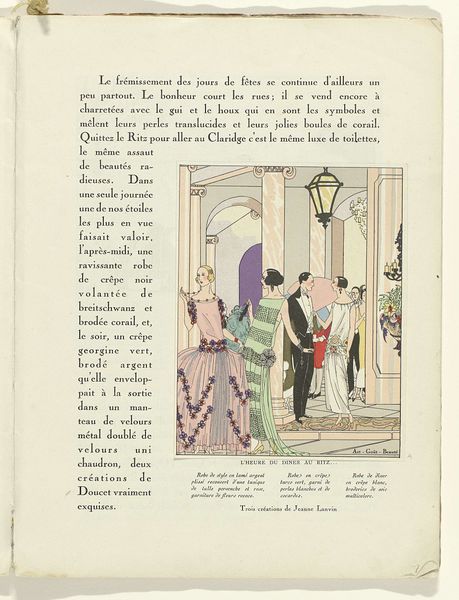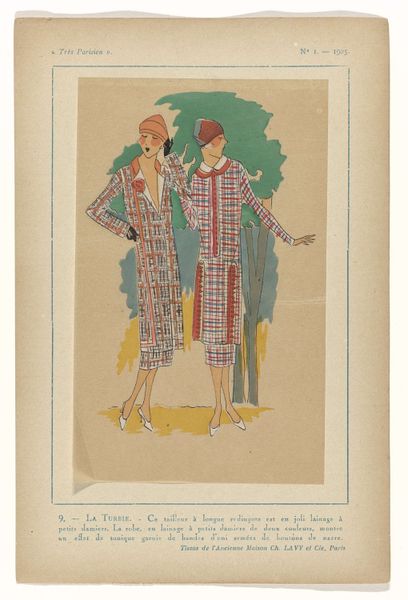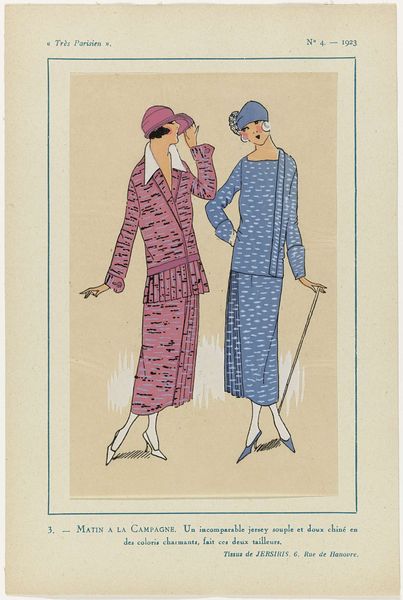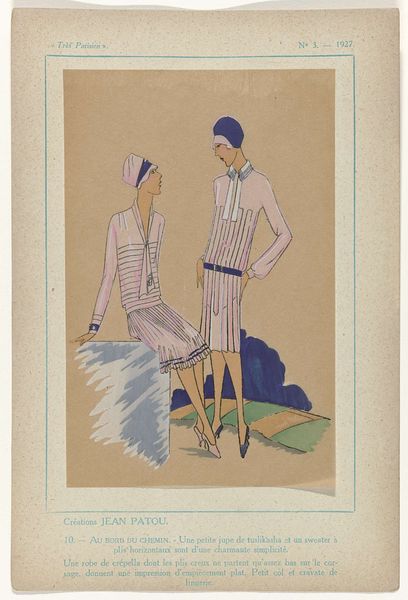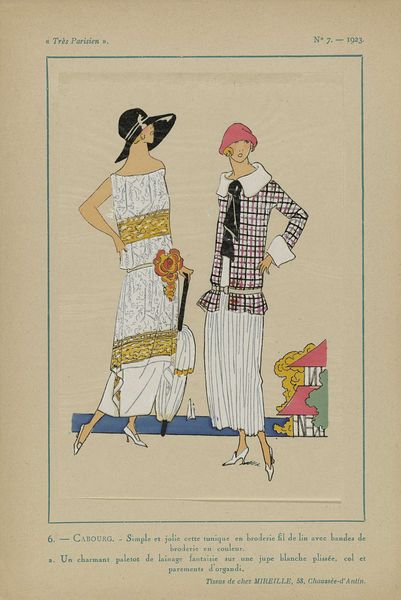
Gazette du Bon Ton, 1914 - No. 4, Pl. 36: La Matinée de printemps / Costumes tailleur de Doucet 1914
0:00
0:00
print, paper, watercolor
#
portrait
#
art-nouveau
# print
#
dog
#
figuration
#
paper
#
watercolor
#
historical fashion
#
line
#
cityscape
#
watercolour illustration
Dimensions: height 242 mm, width 192 mm
Copyright: Rijks Museum: Open Domain
Editor: Here we have "Gazette du Bon Ton, 1914 - No. 4, Pl. 36: La Matinée de printemps / Costumes tailleur de Doucet," a watercolor print by J. Magnin. The colours are so delicate, and the figures seem suspended in this open, outdoor space. What do you see in this piece, especially considering the fashion element? Curator: Well, considering the magazine title and subject matter, it's clear this work is fundamentally tied to the fashion industry and the labor behind it. Notice the "Costumes tailleur de Doucet" in the title; this points to the specific garment maker, emphasizing their craftsmanship. We can delve into questions like: who made the paper? Who printed the illustration? What social class consumed this fashion? Editor: That's fascinating! I was so focused on the surface – the pretty colours, the stylish outfits – I didn’t even think about the actual *making* of the piece or clothes themselves. Curator: Exactly! The choice of materials – paper and watercolour – speaks to a certain accessibility in reproduction, yet also hints at exclusivity. "Gazette du Bon Ton" implies a specific readership. We must ask what these types of publications did in relationship to department stores, pattern making, seamstresses, and female consumption habits. The dog, the figures—even those props must all be seen as status symbols, produced through human labor and capital. Editor: So, the illustration isn't just about showcasing pretty clothes, but about the whole industry and economy surrounding fashion? Curator: Precisely. And further, consider the social context in 1914. On the brink of World War I, anxieties surrounding consumption, gender roles, and material excess were rising in Europe. Looking closely at art objects requires understanding the world and relations that helped make them. Editor: This completely changes how I see the image. Thanks! I will keep that in mind from now on when I'm analysing a work. Curator: Indeed. Understanding the materiality is the key to seeing the whole socio-economic picture within a single frame.
Comments
No comments
Be the first to comment and join the conversation on the ultimate creative platform.
